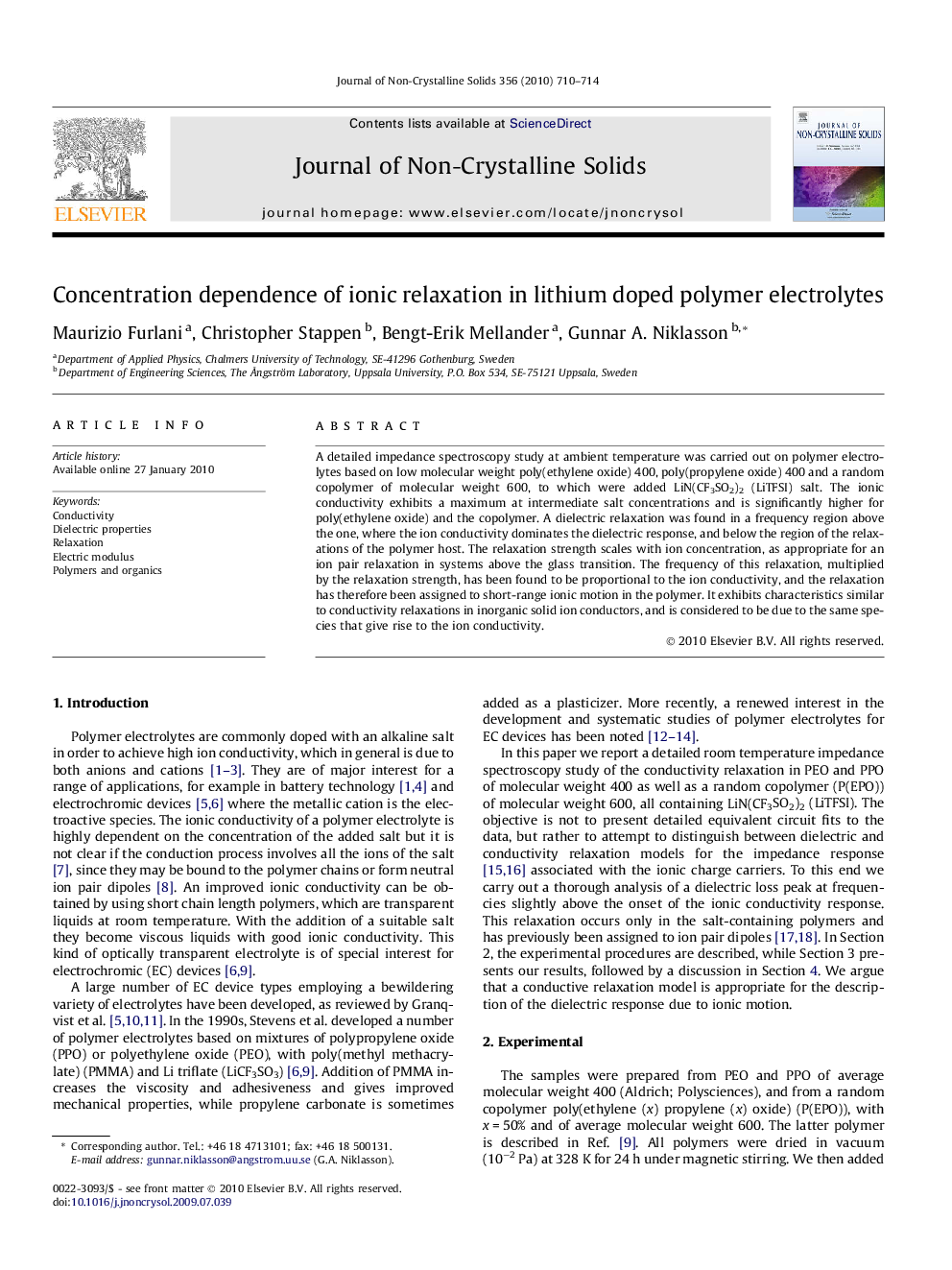| Article ID | Journal | Published Year | Pages | File Type |
|---|---|---|---|---|
| 1481902 | Journal of Non-Crystalline Solids | 2010 | 5 Pages |
Abstract
A detailed impedance spectroscopy study at ambient temperature was carried out on polymer electrolytes based on low molecular weight poly(ethylene oxide) 400, poly(propylene oxide) 400 and a random copolymer of molecular weight 600, to which were added LiN(CF3SO2)2 (LiTFSI) salt. The ionic conductivity exhibits a maximum at intermediate salt concentrations and is significantly higher for poly(ethylene oxide) and the copolymer. A dielectric relaxation was found in a frequency region above the one, where the ion conductivity dominates the dielectric response, and below the region of the relaxations of the polymer host. The relaxation strength scales with ion concentration, as appropriate for an ion pair relaxation in systems above the glass transition. The frequency of this relaxation, multiplied by the relaxation strength, has been found to be proportional to the ion conductivity, and the relaxation has therefore been assigned to short-range ionic motion in the polymer. It exhibits characteristics similar to conductivity relaxations in inorganic solid ion conductors, and is considered to be due to the same species that give rise to the ion conductivity.
Related Topics
Physical Sciences and Engineering
Materials Science
Ceramics and Composites
Authors
Maurizio Furlani, Christopher Stappen, Bengt-Erik Mellander, Gunnar A. Niklasson,
